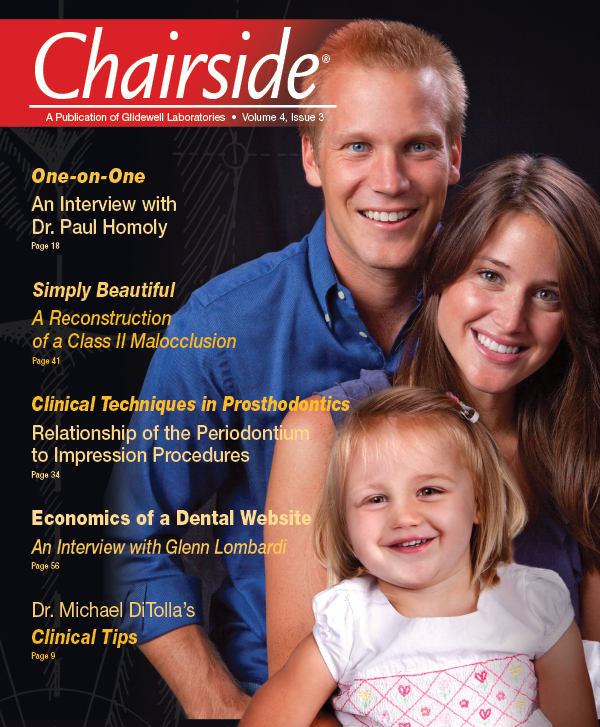Curing Lights: Does a Five-Second Cure Really Work?

If you have seen the marketing propaganda for the latest whiz-bang curing lights, you’ve no doubt found claims of superfast performance and incredible depths of cure. A leading manufacturer of curing lights even goes so far as to state that its light will cure many popular hybrid composites to depths of 5.5–7.4 mm — in five seconds!
A leading manufacturer of curing lights even goes so far as to state that its light will cure many popular hybrid composites to depths of 5.5–7.4 mm — in five seconds! That would be great, if only it were true.
That would be great, if only it were true. This article will give you information that should make you stop and think before following this misleading claim.
First, to understand how these claims can even be stated at all, you need to know something about how depth of cure (DOC) is measured. Although there are various ways to accomplish this task, a simple International Standards Organization (ISO) scrape test may be the most popular because it is quick and expedient.1 In this test, a stainless steel cylinder is essentially filled with composite and cured from one of the open ends. The uncured material on the bottom is scraped away and the height of the resulting cured material is measured. The DOC is stated as 50% of this height.
Contrast that method to the way DOC is measured in the REALITY Research Lab (RRL). We use a modified Class II preparation in a real extracted human tooth. The tooth is secured in an Ultradent bond strength testing jig (Ultradent Products, Inc.; South Jordan, Utah) that has been modified for this purpose. A section of stainless steel matrix, similar to those used clinically by most dentists, provides the surface against which the composite is cured in this Class II preparation.
After filling the preparation and curing the material, the restored tooth is removed from the jig and the DOC is measured using a sophisticated digital hardness testing device. Hardness is the parameter we use to determine how well a composite has cured deep into the preparation. A similar test is used to gauge how well flowable composites are cured on the gingival wall of Class II proximal boxes.
The results from the RRL are definitive and categorically reject the five-second and even 10-second curing claims coming from light manufacturers. Unfortunately, in clinical situations, undercured composite is very difficult — if not impossible — to diagnose, even years after the restoration has been placed. Who is to say that the gradual yellowing of a restoration was caused by undercuring? It might have happened even had the restoration been cured properly. What about a fractured marginal ridge in a Class II restoration? Would it have fractured if the material’s strength had been maximized by thorough curing?
It’s my position that clinicians should do anything and everything within their power to increase the probability that their restorations will be as durable and long-lasting as possible. Longer curing will skew the success rate in your favor. Why do you think indirect restorations are blasted with intense light for extended periods?
Despite its snooze-inducing potential, curing 2 mm increments of composite for 40 seconds remains the gold standard, especially when your light is not in direct contact with the restorative material. This would be the situation when you are incrementally restoring a Class II preparation. Once you have built up the restoration and the restorative material is very close to the light tip, you can reduce your curing time to 20 seconds, assuming that you are using a relatively translucent hybrid composite. Reducing curing time does not work with microfills, which are notoriously difficult to cure.
Despite its snooze-inducing potential, curing 2 mm increments of composite for 40 seconds remains the gold standard, especially when your light is not in direct contact with the restorative material.
The allure of curing restorations for only 5–10 seconds may be hard to resist, but our data clearly and definitively indicates that you will be shortchanging your patients if you allow this primrose path. In the final analysis, how long would you want a restoration to be cured if you were the patient?
To contact Dr. Michael Miller, visit realityesthetics.com or email mmiller@realityesthetics.com.
References
- ^Fan PL, Schumacher RM, Azzolin K, Geary R, Eichmiller FC. Curing-light intensity and depth of cure of resin-based composites tested according to international standards. J Am Dent Assoc 2002 Apr;133(4):429-34.
Reprinted with permission of the Academy of General Dentistry. Copyright ©2009 Academy of General Dentistry. All rights reserved.



